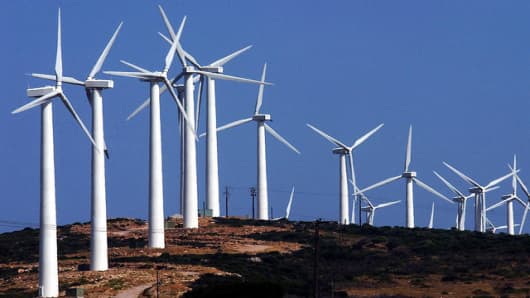Solar, wind, geothermal and biomass energy combined produce about 2.3% of the electricity now generated in the United States and are expected to produce about 2.8% by 2020. In short, “green” energy can’t keep the nation competitive in a global economy.
“The key thing to remember is that 49.7% of the electricity in the United States is generated by burning coal,” says Peter Van Doren, an economist at the Cato Institute in Washington, D.C. “That creates a lot of carbon dioxide. The big fight over the Kyoto Protocol isn’t about cars, but what we’re going to do with coal-fired generating plants. The higher the tax on emissions, the more competitive alternative sources of energy become.”
The Kyoto Protocol is an United Nations agreement on climate change that assigns mandatory targets for reduction of greenhouse gas emissions to signatory countries.
Nuclear plants generate about 19.3% of electricity in the United States; natural gas, 18.7%; hydro, 6.6%; petroleum, 3%; and renewable sources, 2.3%. The balance comes from propane and miscellaneous industrial gases.
Renewable energy sources are capital intensive and pose significant risk to investors compared with conventional sources of energy. Fulfilling the dream of hydrogen power, for instance, would cost trillions of dollars. Deregulated electricity markets mean there is no guarantee that investors will recover capital costs from customers.
“Accordingly, investors favor technologies that have higher marginal but lower capital costs,” says Van Doren.
That makes proven technologies such as coal-fired plants a far less speculative bet than alternative energy. Traditional energy and oil field services companies have been consistent winners in the IPO market, including Bill Barrett, TODCO, Hornbeck Offshore Services, JED Oil, Atlas America and Alon USA Energy.
Backers of renewable energy say demand for environmentally friendly power would increase if electricity generated at coal- or natural-gas fired plants were priced to reflect the cost of pollution. But critics say the added cost of additional pollution reduction would exceed future health benefits.





